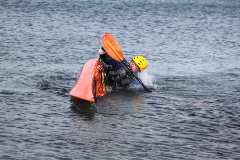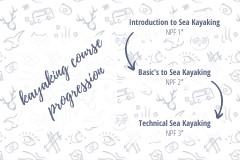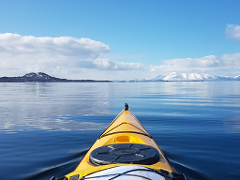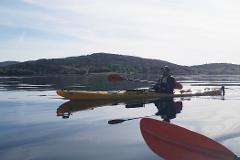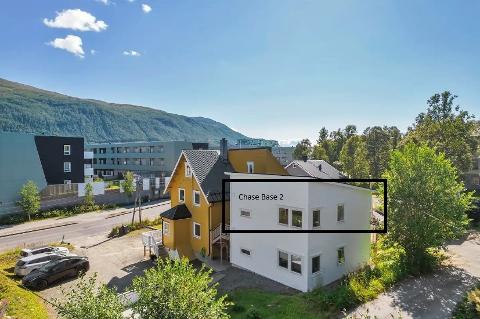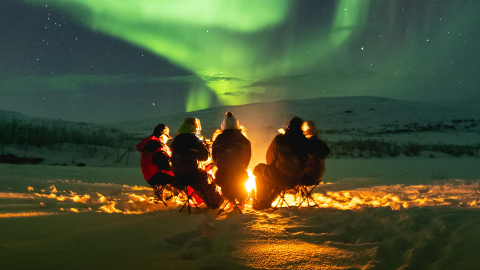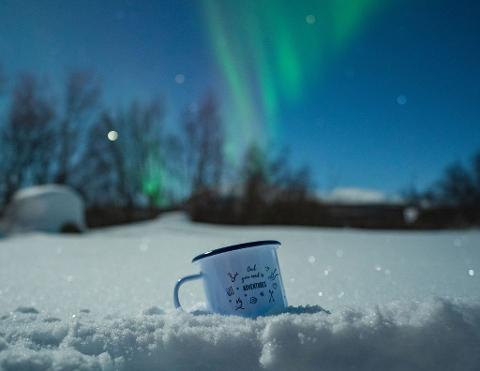About the course
This 2-day Basic Course (Grunnkurs) gives you the fundamental knowledge of the kayak skills and equipment required so you can safely go out sea kayaking in calm conditions. It is the second course in the NPF training ladder, known as the Wetcard (Våttkort). Many kayak rental operators in Norway require you to have a wetcard before renting out kayaks.
After completing the course, you will have learned to effectively maneuver the kayak and understand how your equipment works. You will also learn basic rescue techniques and safety routines. The aim is to have a good grounding in basic techniques, with a focus on paddling. The course will combine theory and practical.
At the end of the course you will receive a Wetcard (Våttkort) with a sticker to confirm completion of the Basic Course (Grunnkurs). You will feel confident to go out in rented kayaks with friends and family on your next holiday. If you want further training, then the next step is to take the Technique Course (Teknikkurs).
The training agency for the course is the Norwegian Paddle Association (NPF) and all courses provided by Wandering Owl or Wild Lab Projects follow training standards, with a qualified Activity Leader as your instructor.
Summary of course details
Season: 15th June - 15th September
Duration: About 16 hours. Please allow two days for the course.
Group size: 2 - 3 pax
Minimum age: 14 years old (parents' permission required)
Meeting time: 13:50 in front of Senja Roasters, Stonglandseidet
Departure: 14:00
Inclusions: Drysuits & boots (adult sizes only), kayaks and necessary equipment, lunch on day 2, biscuits & hot chocolate, Wetcard certification cards and registration.
Prerequisites: Be a confident swimmer, and to have no major shoulder, neck or back injuries that would impede paddling or climbing in and out of the kayak.
Good to know: A kayak drysuit doesn't prevent all water from entering the drysuit. Often participants will have some water around the neck and wrists. Please wear a good merino wool base layer for thermal protection.
Safety considerations: The course is an active, in-water activity and involves some walking (at least 200m) and handling/carrying equipment; the conditions may be icy, slippery, uneven, muddy, snowy, or otherwise. The temperatures may be cold (sometimes below 0°C) or could be warm. Please ensure you are wearing appropriate clothing underneath your drysuit and bring a change of clothes for afterwards.
What are the skills acquired during the course?
- Lift, carry, launch and enter the kayak
- Efficient forward paddling
- Backwards paddling and stopping the kayak.
- Moving the kayak sideways
- Support stroke (low brace)
- Steering stroke from the rear (rudder)
- Turning the kayak (sweep stroke and steering stroke).
- Landing the kayak
- Securing the kayak after landing
- Rescue techniques (self-rescue and companion rescue)
- Injury prevention
- Planning of an easy trip to complete
- General safety and basic seamanship
- General information about outdoor life and Norway's Right of Public Access (Allmannsretten)
- "Leave No Trace" principles

